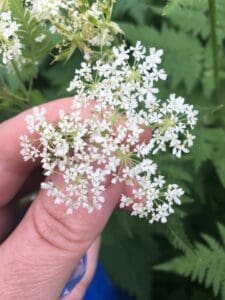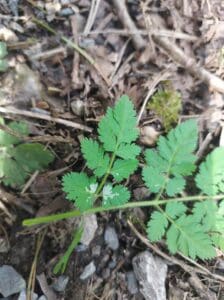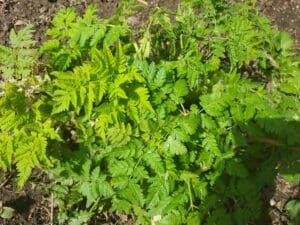Sweet Cicely / Spring / Summer / Autumn / Edible
Common Names
Sweet Cicely, cicely, myrrh, garden myrrh, sweet chervil
Botanical Name
Myrrhis Odorata
Scientific Classification
Kingdom – Plantae
Order –Apiales
Family – Apiaceae
Physical Characteristics of Sweet Cicely
Sweet Cicely is a perennial growing to 1m high and 1m across in full bloom.
Leaves
The leaves are up to 30cm long and appear fern like and are 1-3 times pinnate. They often have silvery pale blotches that help distinguish them from lookalikes.
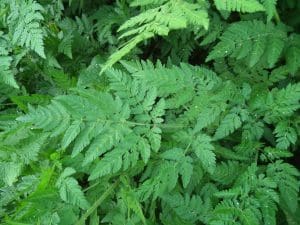
Flowers
The flowers are white, but can be slightly pink on occasion; they’re based in medium sized long stalked umbels 2-4cms across with 5-12 umbels coming from each plant.
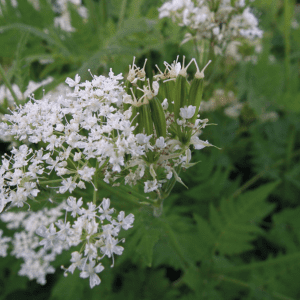
Seeds
The fruit/seeds are elongated rugby ball shaped from 1-2cm in length, beginning green and turning black as they mature.
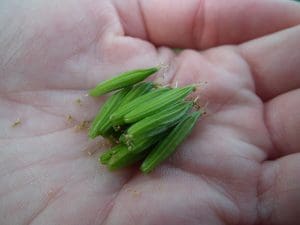
Stem
It has a rounded hollow stem with down hairs all over, giving it a slight velvety feel.
Root
A thick pale yellow parsnip like root grows to 20cms down.
Habitat
Found in the UK and the most temperate regions of Europe, America and Asia. Garden edges, sunny spots, hedgerow edges
Known Hazards
None known
Could be confused with
Other members of the Carrot family, many of which look very similar and some of which are deadly toxic! You can read more about them here.
Needless to say, you should get your botanical guide out and check everyb feature very carefully to avoid making a toxic mistake. The two most likely family members you could confuse it with are:
Cows Parsley (Anthriscus Sylvestris) – the leaves are almost identical although Sweet Cicely leaves are a little softer to touch, the flower bunches of Sweet Cicely are smaller than those from cows parsley and the seeds are more elongated and will turn black.
Poison Hemlock (Conium Maculatum) looks similar in leaf structure and flower, however, it grows to a larger size and has purple blotches over its stem which Sweet Cicely does not.
The easiest way to tell apart from these two is from the smell of aniseed as you break the stem and seed.
Edible Use
Root: Eaten raw thinly sliced in salads and other dishes, Boiled similar to parsnips
Stem/leaves: Syrup, Candied, Salads, Sliced in all dishes, Sparkling wine, Lemonade, As a straw
Seeds when green: Dried and powdered, As seasoning, As flavor boost, Candied
Notes on Herbal uses
A tonic can be made out of the whole plant that will aid digestion and will promote an appetite. The volatile oils and flavonoids extracted through alcohol infusion can act as a blood purifier.
It’s also referenced that an infusion of the roots in tea will give boring people a lift of life and boost of confidence.
Extra notes from the Foragers
This is the perfect plant for eating whilst on a walk, it gives you the feeling of a sugar boost, the seeds are easy to carry and keep nibbling on.
Although there’s a toxic (Hemlock) look-alike to this plant I always advise beginner foragers to find this plant as the aniseed smell and flavour makes it easily distinguishable from every other plant in the Umbellifer family – apart from Fennel of course.



